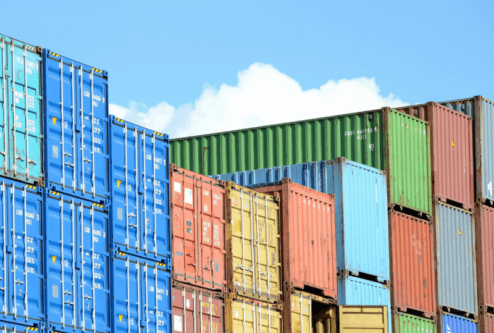
Technical Barriers to Trade: Understanding Their Impact and Solutions
- February 13, 2025
In the world of international trade, goods and services are subject to a wide array of regulations and standards. Among the most significant trade barriers are Technical Barriers to Trade (TBTs). These barriers can impede the smooth flow of international commerce by setting requirements that products must meet before they can be sold in foreign markets. While TBTs are often designed to ensure product safety, protect consumers, and preserve the environment, they can also serve as obstacles to market access, particularly when they are unnecessarily restrictive or applied inconsistently across countries.
This article explores what technical barriers to trade are, their impact on global trade, and the ways in which countries and organizations work to address them.
What Are Technical Barriers to Trade (TBTs)?
Technical Barriers to Trade refer to any standards, regulations, or conformity assessment procedures that countries use to ensure the quality, safety, and performance of products. While TBTs are typically introduced to protect consumers and the environment, they often require businesses to comply with specific technical specifications or testing before products can be marketed internationally.
These barriers can come in the form of:
- Product standards: Specific requirements for the design, composition, or performance of products (e.g., safety standards for electrical appliances or nutritional labeling for food products).
- Conformity assessment procedures: Methods used to check whether products comply with the required standards, such as inspections, certifications, and lab testing.
- Packaging and labeling requirements: Regulations related to how products are packaged and labeled, which may include language requirements, warning labels, or instructions for use.
- Testing and certification: The process of ensuring that products meet safety or quality standards, often requiring independent verification by accredited bodies.
While many of these measures are necessary to protect public health, ensure product quality, and preserve environmental standards, when implemented inconsistently or in an overly complex manner, they can unintentionally hinder trade.
Types of Technical Barriers to Trade
- Product Standards: Product standards define the characteristics that a product must have in terms of quality, safety, performance, and environmental impact. For instance, electrical appliances may have specific voltage or energy-efficiency standards that must be met to ensure safe operation and minimal environmental impact. Inconsistent or overly stringent standards between countries can create difficulties for exporters, who may need to redesign or retest products to comply with each country’s individual requirements.
- Sanitary and Phytosanitary (SPS) Measures: While not always categorized as TBTs, SPS measures are closely related. These are regulations related to food safety, plant health, and animal health. Countries may impose sanitary standards, such as ensuring that imported food products do not contain harmful chemicals or pathogens. While these measures protect consumers, excessive or inconsistent SPS regulations can prevent the smooth flow of agricultural products between countries.
- Packaging and Labeling Regulations: Many countries have strict rules governing how products should be packaged and labeled, especially when it comes to food, medicine, and consumer goods. For example, some countries may require labels to include information in the local language, or mandates for specific nutritional information or warning labels. These requirements can vary widely between regions, creating a barrier for exporters who need to adjust packaging and labels for each market.
- Testing and Certification Requirements: Testing and certification procedures ensure that products meet the required standards for safety, quality, and environmental impact. However, these requirements can often be a major barrier to trade if they are burdensome or redundant. For example, a product may need to be tested multiple times by different organizations in different countries, even though the product has already been certified in the country of origin. This not only delays time-to-market but also increases the cost of doing business internationally.
Why Do Technical Barriers to Trade Exist?
There are several reasons why countries implement technical barriers to trade:
- Public Health and Safety: The primary reason for TBTs is to protect public health and safety. Countries may introduce standards to ensure that products, particularly food, medicine, and chemicals, do not pose risks to consumers. For example, regulations requiring the testing of pharmaceuticals before they are sold ensure that only safe, effective drugs reach the market.
- Environmental Protection: Some TBTs are intended to safeguard the environment by regulating the production, use, and disposal of certain products. For instance, products that emit harmful pollutants may be subject to stricter regulations to reduce environmental harm.
- Consumer Protection: Ensuring that consumers are able to make informed decisions about the products they buy is another important reason behind technical barriers. Labeling requirements, for example, help consumers understand the ingredients, health risks, or potential allergens in products they purchase.
- National Security and Economic Protection: In some cases, TBTs can be used to protect a country’s economic interests or security. For example, certain technologies or products may be restricted due to concerns over national security or the protection of key industries.
- Cultural and Ethical Considerations: Some technical barriers reflect cultural or ethical standards, such as prohibitions on the use of certain materials (e.g., animal testing) or requirements related to the packaging of food products to align with local cultural preferences.
The Impact of Technical Barriers on Trade
While technical barriers to trade serve legitimate purposes, they can also have several unintended negative consequences for international trade:
- Increased Costs: Complying with multiple technical standards and certification processes can be expensive. For businesses, the cost of re-testing products for different markets, adapting packaging, and fulfilling documentation requirements can be significant. These additional costs may deter smaller businesses from engaging in international trade.
- Delays and Trade Friction: Lengthy testing, certification, and approval processes can delay the time it takes for a product to reach international markets. These delays can be especially challenging in industries where speed-to-market is crucial, such as technology and fashion.
- Reduced Market Access: Strict and inconsistent technical regulations can prevent foreign products from entering certain markets. In some cases, even if a product meets international standards, it may not be accepted in a particular country due to the country’s own standards and regulations. This limits market opportunities for exporters.
- Discriminatory Practices: If technical barriers are used in a protectionist manner, they can discriminate against foreign products. For example, a country may impose stringent product standards that local manufacturers can easily meet but that are difficult for foreign companies to comply with. This creates an uneven playing field that can hurt international trade.
Addressing Technical Barriers to Trade
Efforts are being made at both the national and international levels to address technical barriers to trade:
- World Trade Organization (WTO): The WTO plays a central role in reducing technical barriers to trade. Under the Agreement on Technical Barriers to Trade (TBT Agreement), member countries are committed to ensuring that technical regulations and standards do not unnecessarily restrict trade. The agreement encourages countries to base their regulations on international standards and to harmonize product requirements to reduce trade friction.
- International Standards Organizations: Organizations like the International Organization for Standardization (ISO) and the International Electrotechnical Commission (IEC) create global standards for products, which can help reduce discrepancies between national regulations. These organizations work to ensure that products are tested and certified according to internationally recognized standards, making it easier for businesses to comply with regulations across multiple markets.
- Mutual Recognition Agreements (MRAs): Countries and regions often negotiate Mutual Recognition Agreements (MRAs), which allow them to accept each other’s conformity assessments and certification processes. MRAs reduce the need for redundant testing and certification, simplifying the process for exporters and reducing costs.
- Regulatory Cooperation: Governments can work together to harmonize regulations, aligning their technical standards and procedures to make it easier for businesses to trade across borders. Regulatory cooperation can help ensure that standards are based on scientific evidence and are designed to meet both trade and safety objectives.
Conclusion
Technical barriers to trade are a double-edged sword. While they play a crucial role in protecting public health, safety, the environment, and consumers, they can also impose significant challenges for businesses seeking to enter foreign markets. By harmonizing standards, reducing unnecessary testing, and engaging in international cooperation, the global trade community can work toward reducing the negative impact of TBTs and making it easier for products to move across borders. This would not only benefit businesses but also ensure that consumers around the world continue to benefit from safe, high-quality products.


